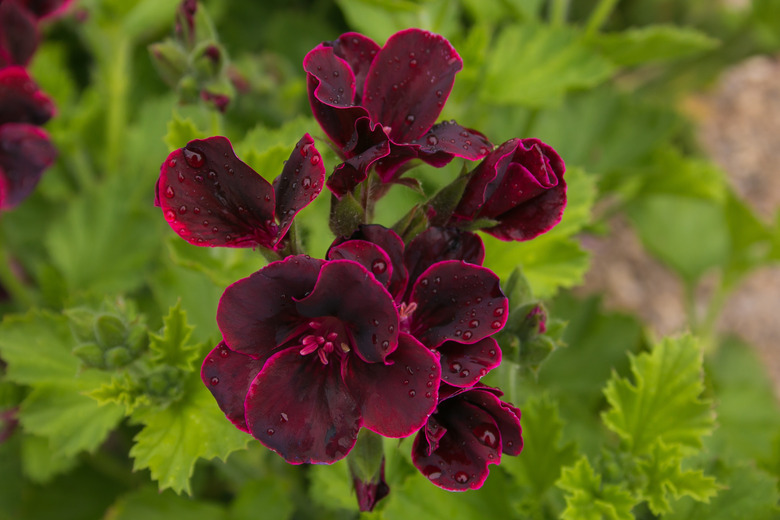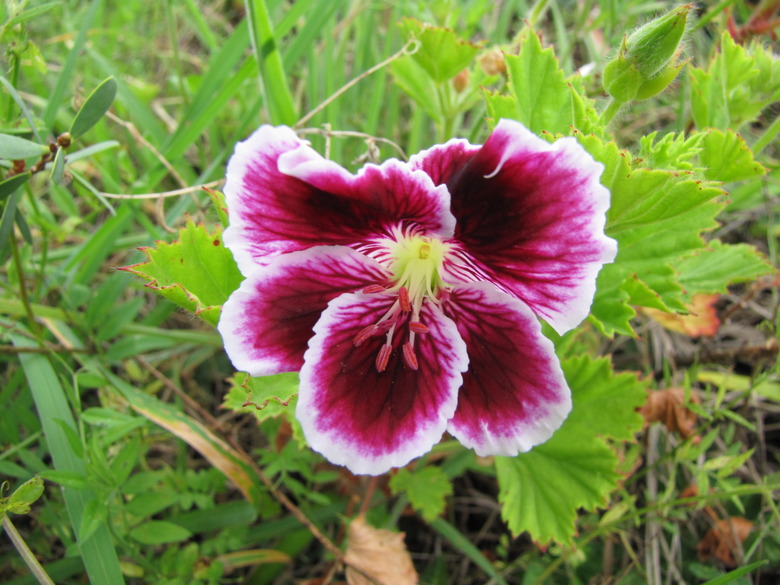How To Care For Martha Washington Geraniums
Also known as regal geraniums, Martha Washington geraniums (Pelargonium x domesticum; USDA zones 10 to 11) are a hybrid variety of geranium that produce stunning flowers. However, these geraniums can be trickier to care for than other, more common types, despite being hardy.
Though they are technically annuals, **Martha Washington geraniums can also be grown as perennials in USDA zones 9 and 10.**
About Martha Washington Geraniums
Martha Washington geranium flowers come in shades of red, pink and purple and often have attractive markings and shading. The leaves of this species may be heart- or kidney-shaped and have toothed margins. The plants have heights of 1 to 2 feet.
Martha Washington geraniums need cool nights to produce flowers. They flower best when temperatures are below 55°F. Therefore, these geraniums bloom in the spring and sometimes in the fall, producing fewer flowers during the summer month. For this reason, Martha Washington geraniums are best kept as houseplants rather than outdoor specimens.
Tip
Martha Washington geraniums require cool nights—preferably below 55°F—to produce flowers.
Caring for Martha Washington Geraniums
The Clemson Cooperative Extension recommends planting geraniums in a growing medium that consists of equal parts garden loam, peat moss and either sand or perlite. The soil must be kept moist and be well-draining.
Martha Washington geraniums grow best when they receive full sun. However, hot outdoor sun can cause the flowers to fade. So if you keep your plants on a patio or deck, provide shade during the hottest part of the afternoon.
While other types of geraniums will grow bushy if pinched, **Martha Washington geraniums form branches naturally and don't need to be pinched.**
Geraniums need fertilizer feedings twice a month or every three weeks with an all-purpose fertilizer. Slow-release formulas work well for these plants. Begin fertilizing when you see active growth, such as leaf and bud formation.
Martha Washington Geranium Problems
Martha Washington geraniums can develop a condition called Botrytis blossom blight, also known as gray mold, which can cause the flowers to dry up sooner than normal. To prevent this and other diseases and to promote additional flowering, immediately remove spent flowers from the plant.
Air circulation helps prevent gray mold from developing. It is also important not to overwater Martha Washington geraniums, which can lead to root rot.
Like other houseplants, Martha Washington geraniums can become infested with pests, mainly aphids, mealybugs and whiteflies.
Yellow, stunted leaves could indicate that the plant is not receiving enough nitrogen.
Tip
Unlike other types of geraniums, Martha Washington geraniums don't require any pinching to be bushy.
Martha Washington Geraniums Winter Care
Outside of their hardiness range, Martha Washington geraniums are typically grown indoors as annuals. **If you have Martha Washington plants outdoors and want to overwinter them, bring them inside before the first frost of the fall.**
At this time, cut back the plants and trim the roots. It is best to repot the geraniums in a container smaller than the original. You can continue to treat your Martha Washington geranium plant as a houseplant by placing it in a sunny window or allow it to go dormant in a cool, dark location, such as a basement.
Reduce watering and do not fertilize while the plant is dormant.
References
- Missouri Botanical Garden: Pelargonium x Domesticum
- Washington State University Spokane County Extension: Geraniums (Pelargoniums)
- Colorado State University Extension: PlantTalk Colorado – Geranium Types
- University of Kentucky Cooperative Extension Service: Geraniums
- Clemson Cooperative Extension: Growing Geraniums Indoors
- Clemson Cooperative Extension: Geranium
- University of Minnesota Extension: Growing Geraniums as Annual Flowers in Minnesota

